Roof and Ceiling Leak Detection
See What's Really Going On!
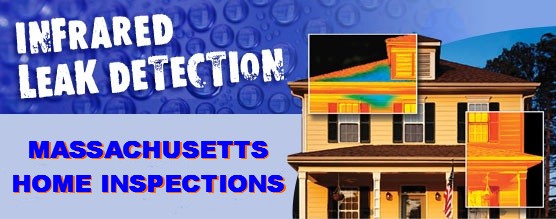
An infrared roof inspection can detect hidden moisture within roof cavities and identify potential issues such as ice dams, clogged drains, and water retention—problems that, if left undetected, could lead to significant roof damage and interior leaks. Since roofing materials are very costly to replace, my infrared roof evaluation can help you save a substantial amount in the long run. It allows you to determine whether specific sections need minor repairs now to prevent major repairs or full replacement later. Thermal imaging provides a clear, visual assessment of your roof's current condition, helping you make informed decisions.

This EPDM roof appears flawless to the eye, but my infrared camera easily detected significant moisture buildup beneath the rubber membrane.
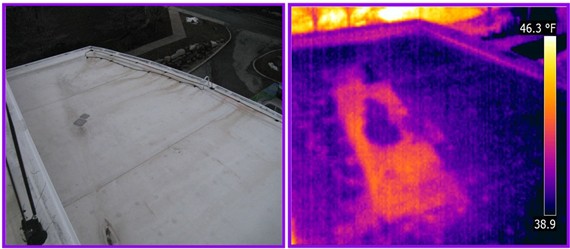
During a home inspection, roof leaks are typically identified through direct observation and confirmed using moisture meters on the sheathing below. However, if moisture is detected in an area where the roof sheathing is not visible—such as beneath a finished cathedral ceiling or a ceiling below a living space—the exact source of the leak cannot be easily determined.
Many homeowners mistakenly believe that moisture stains always indicate a leak directly above the affected area, but this is often not the case. On gable roofs, for instance, leaks can originate at the ridge line and travel along rafters before dripping onto the ceiling below. Locating the precise source of the leak typically requires removing sections of the damaged ceiling, which first necessitates clearing furniture, protecting floors from debris, and sometimes even setting up scaffolding—costing homeowners hundreds or even thousands of dollars.
Infrared thermography provides a non-destructive, non-contact solution for detecting and pinpointing hidden roof leaks without damaging interior or exterior surfaces. By identifying the problem area with precision, infrared imaging allows for targeted repairs, minimizing disruption and unnecessary demolition.
I prefer conducting exterior flat roof inspections in the early evening. For an accurate infrared inspection, the roof surface must be heated by a full day of solar exposure. As the sun sets and the roof begins to cool, my infrared camera can detect thermal differences—revealing any moisture intrusions. Water has a unique thermal capacity, allowing it to be observed both on the surface and beneath roofing materials. If moisture is seeping into the roof cavity, the dry insulation will cool much faster than water-saturated areas, making these thermal anomalies easily identifiable.
My infrared roof inspections offer a reliable solution for detecting subsurface roof issues that aren’t visible to the naked eye. Regularly scheduled infrared inspections can identify moisture damage and water leaks before they become apparent, making this the most cost-effective approach to roof maintenance. With my expertise in acquiring and interpreting infrared data, I provide you with a professional, easy-to-understand roof inspection report within hours of your inspection.

Visually, this roof structure appears sound, but infrared imaging quickly reveals hidden anomalies.
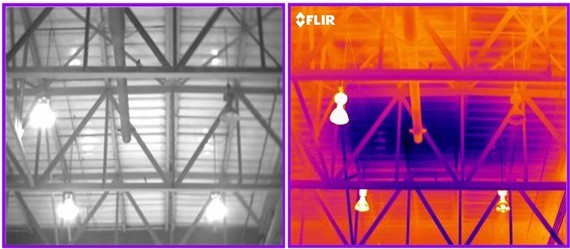

The source of this roof leak was not visible to the eye, but my infrared camera instantly pinpointed its exact location.
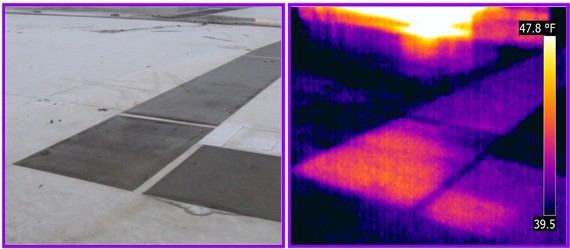

Don't wait until it's too late—infrared imaging can uncover hidden issues before they become costly problems.
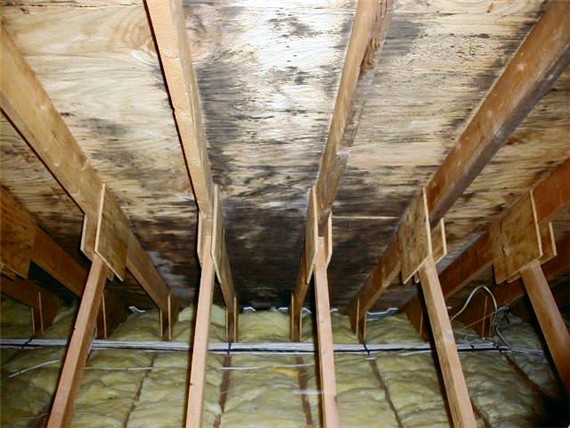
For more information, please go to the top right corner and click "Navigate."